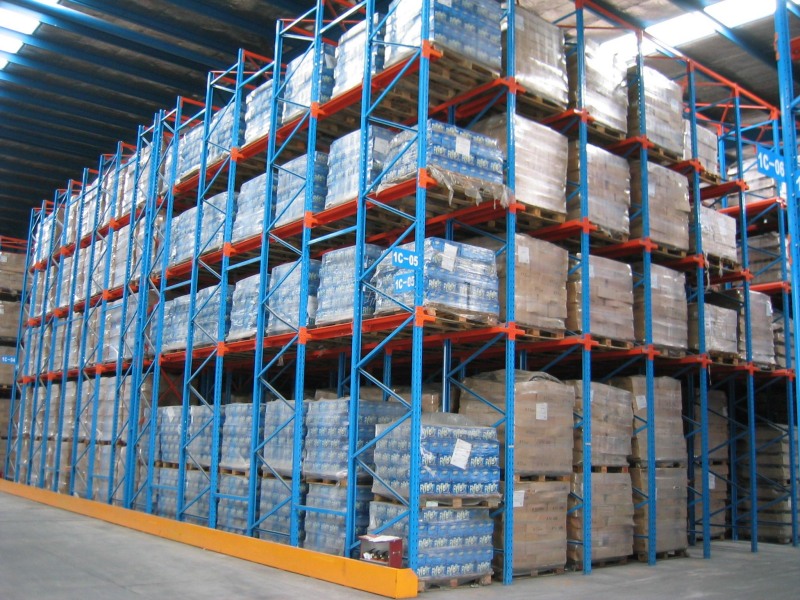Efficient warehouse storage is one of the foundations of a smooth supply chain. With global e-commerce sales expected to surpass $7.4 trillion by 2025 (Statista), the demand for optimized storage and faster order fulfillment is higher than ever. At the center of this efficiency lies the pallet racking system, a structure that determines how goods are stored, retrieved, and protected.
Today, businesses can choose from a wide range of pallet rack storage solutions, each designed to balance cost, density, and accessibility. Below we will look at the most widely used pallet racking systems, how they compare, and which industries typically benefit from them.

Before diving into the types, it’s useful to understand why pallet racking systems are critical. Studies from the Warehousing Education and Research Council (WERC) indicate that storage accounts for 25–30% of warehouse operating costs. A well-designed racking system not only saves space but also improves safety, reduces product damage, and boosts labor efficiency.
A modern Pallet Rack Storage System must also adapt to automation and evolving demand. With order picking now taking up nearly 50% of warehouse labor time, the right racking layout can mean the difference between meeting delivery deadlines and facing costly delays.
Here’s an overview of the most widely used systems in warehouses worldwide:
| Racking System | Storage Density | Accessibility | Typical Use Cases | Cost Level |
| Drive-In Pallet Racking Systems | High | Low | Cold storage, bulk storage | Medium |
| Push Back Racking | Medium-High | Medium | Food, beverage, manufacturing | Medium |
| Pallet Flow (Gravity Flow) | Very High | Medium-Low | FIFO inventory, perishable goods | High |
| Cantilever Racking | Low-Medium | Medium | Lumber, pipes, furniture | Medium |
| Motorized Mobile Pallet Racking | Very High | High | Pharmaceuticals, automotive, cold storage | High |
When space utilization is the top priority, Drive-In Pallet Racking Systems become a preferred solution. They allow forklifts to enter the rack structure itself, storing pallets deep inside the system. This reduces aisle space and increases storage density by up to 80% compared to selective racking.
Industries like cold storage, dairy, and beverages use this system heavily, as they often store large volumes of identical products. The trade-off is reduced accessibility; pallets are stored and retrieved on a LIFO (Last-In, First-Out) basis, which may not work for all industries.
Push back racking operates on a system of nested carts, allowing multiple pallets to be stored in depth while still granting access from the front. Storage density is typically 25–30% higher than selective racking, and it works well for medium-turnover goods.
This system is widely adopted in food and beverage industries, as it offers a compromise between density and selectivity without the high costs of automated solutions.
Also known as gravity flow racking, this system uses inclined roller tracks to move pallets automatically from the loading side to the picking side. It is ideal for FIFO (First-In, First-Out) inventory management, which is crucial in industries like pharmaceuticals, packaged foods, and perishable goods.
While Pallet Flow systems provide one of the highest storage densities, they come with a higher initial cost. However, the long-term benefits in product rotation and labor savings often outweigh the investment.
For warehouses with limited square footage, Motorized Mobile Pallet Racking provides a dynamic solution. Instead of fixed rows, racks are mounted on guided mobile bases that move along floor rails. By eliminating the need for multiple aisles, warehouses can increase capacity by up to 80% without expanding their building footprint.
This system offers both high density and high accessibility, making it attractive for pharmaceuticals, cold storage, and high-value inventory. While the upfront cost is higher, it saves significantly on real estate expenses and is increasingly paired with automation for even greater efficiency.
Not all warehouses deal with standard palletized goods. Industries like construction, furniture, and steel storage rely on Cantilever Racking, which uses arms extended from a central column to support long or irregularly shaped loads. Though not as dense as other systems, its accessibility for oversized products makes it irreplaceable in certain sectors.
Market data shows that demand for racking systems is projected to grow steadily, with the global pallet racking market expected to reach $16.5 billion by 2030 (Allied Market Research). Within this, more advanced systems like Motorized Mobile Pallet Racking are gaining traction in regions where land and energy costs are rising.
Key drivers for adoption:
E-commerce growth fueling demand for faster, more flexible storage.
Cold storage expansion requiring Drive-In Pallet Racking Systems and mobile solutions.
Sustainability goals pushing warehouses to maximize existing space instead of expanding footprint.
The best Pallet Rack Storage System depends on product type, turnover rate, and budget. For example, a food distributor may benefit from pallet flow systems to ensure FIFO inventory, while a logistics company handling diverse SKUs may prefer selective racking for direct accessibility.
Warehouse managers increasingly use simulation software and ROI calculators before making decisions. Studies suggest that investing in the right racking system can reduce operating costs by 15–25% and improve order fulfillment speed by up to 40%.
Pallet racking is no longer just about storing goods; it is about optimizing every square meter for efficiency, safety, and growth. As industries evolve, systems like Drive-In Pallet Racking Systems, Motorized Mobile Pallet Racking, and other specialized solutions will continue to shape the way warehouses operate. The right choice not only impacts storage capacity but also influences profitability and long-term competitiveness in the global market.
Copyright @ 2025 Nanjing Huayide Logistics Technology Co., Ltd. All Rights Reserved.
 network supported
network supported
Sitemap / Xml / Blog / Privacy Policy